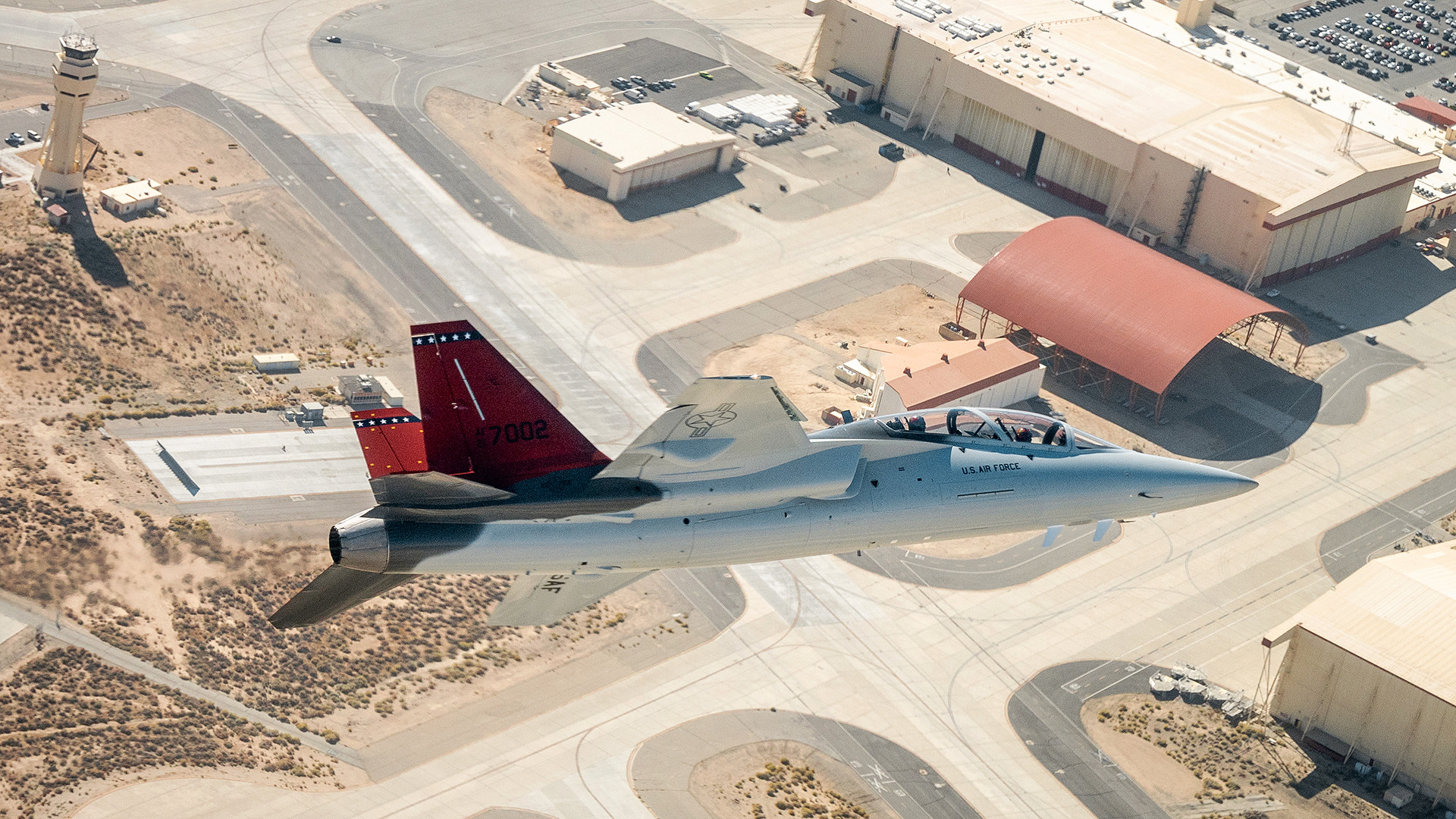The first T-7A Red Hawk, one of five planned pre-production engineering and manufacturing development (EMD) examples, has touched down at Edwards Air Force Base in California. This is a hugely important milestone for the much-delayed T-7 program and marks the formal start of developmental flight testing.
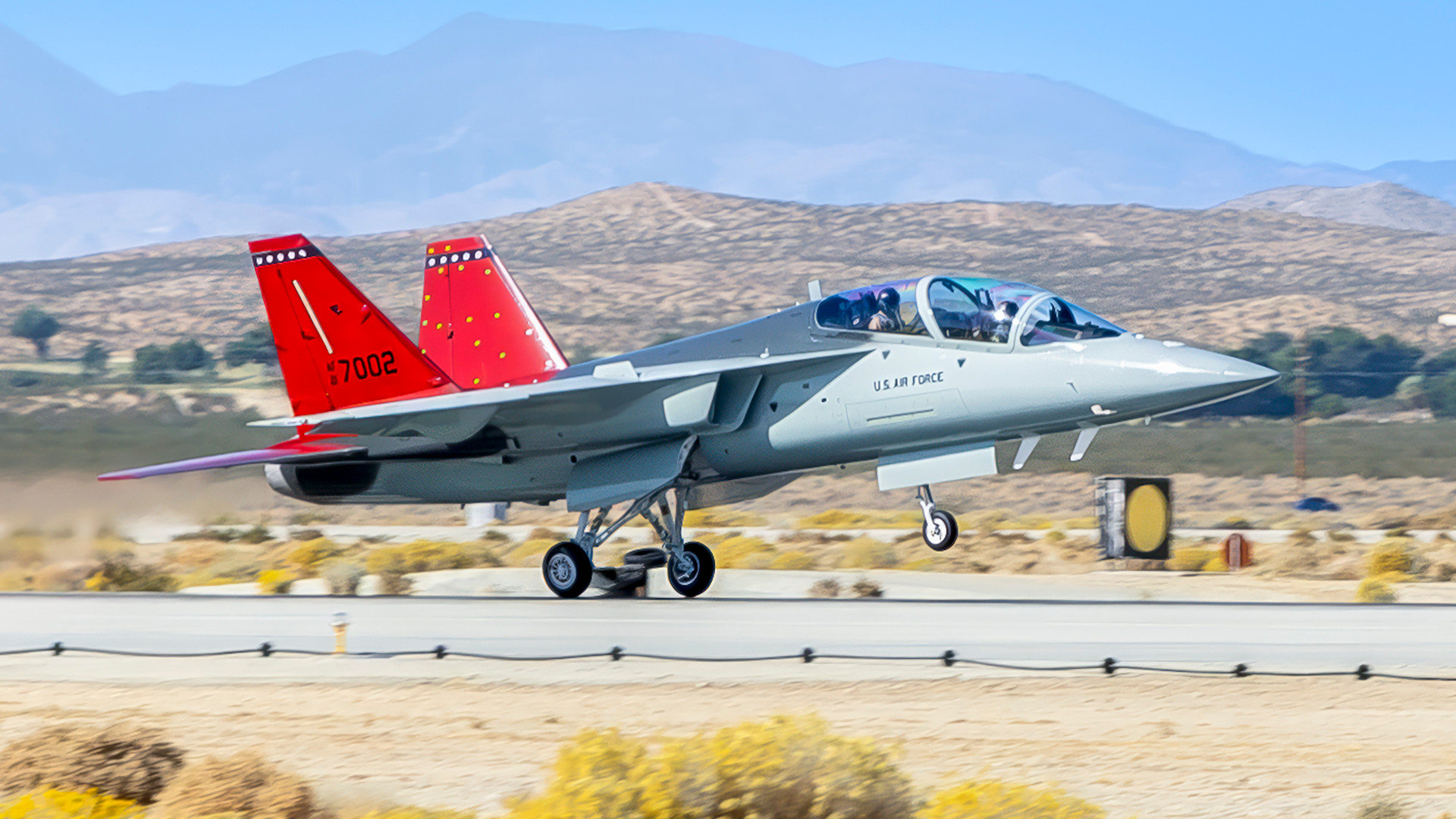
The T-7A’s arrival at Edwards also comes as the U.S. Air Force says an ‘F-7’ light fighter variant or derivative of the Red Hawk is one option it is looking at to supplant at least a portion of its F-16C/D Viper fleet. For years now it has become increasingly apparent that the service will need new lower-tier combat jets – crewed or uncrewed – to help provide sufficient “affordable mass” to meet all of its future requirements, including defending the homeland, in the 2030s and beyond.
The initial T-7A, serial number 21-7002 and also known as APT-2, arrived at Edwards yesterday, where it now forms the core of an Integrated Test Force (ITF) for the type. The T-7A ITF is part of a larger Airpower Foundations Combined Test Force, which operates in cooperation with the 416th Flight Test Squadron. Two more EMD T-7As are expected to head to Edwards in the next few months, according to Boeing. The company has said previously that it hopes to deliver the last pair of EMD jets to the Air Force by the end of this year.
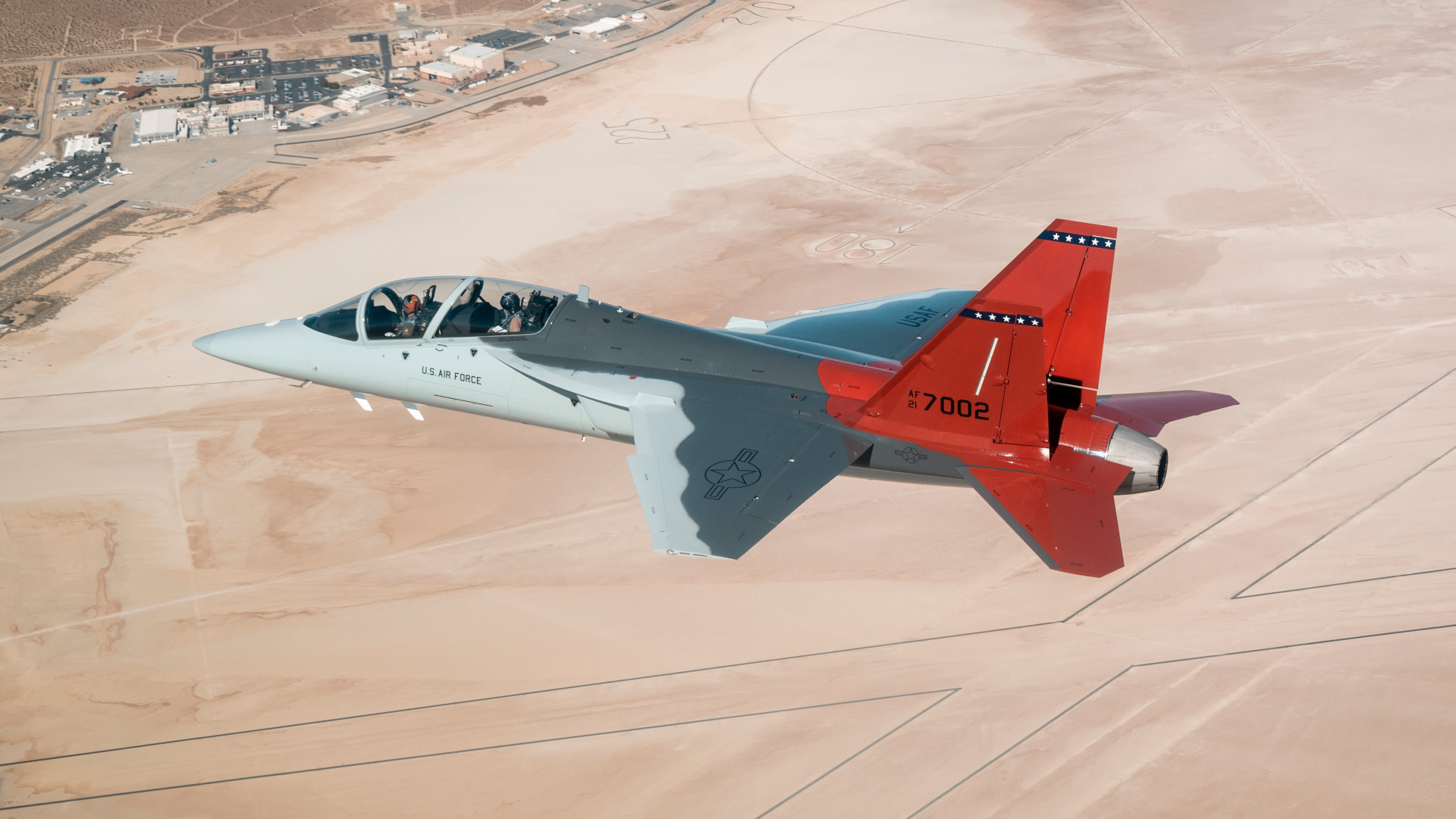
“The T-7A team has been leveraging digital transformation through Distributed Test Operations since 2019,” according to an Air Force release today. “This method allows seamless networked capability between Boeing’s facilities in St. Louis and mission control rooms at Edwards.”
“Test pilots have been busy rehearsing missions in the simulator and will quickly begin to fly up to three times daily, utilizing APT-2 for envelope expansion testing before moving into mission systems,” the service added. “The T-7A ITF will utilize a mix of both Air Force and contractor-owned aircraft to swiftly bring cutting edge capability to train the next generation of warfighters.”

This comment about contractor-owned aircraft could refer to a pair of non-production-representative demonstrators that Boeing has been flying since December 2016. The company, which has been working on this endeavor with Saab in Sweden, went on to win the Air Force’s T-X competition in 2018 with what has since evolved into the T-7A.

The subsequent development of the T-7A has been beset by a host of technical and other issues since 2018. APT-2 only flew for the first time this past June. The Air Force now does not expect to reach initial operational capability (IOC) with the Red Hawk until 2027 at the earliest, three years later than originally expected.
The Air Force plans to buy 351 of the new jet trainers, which will supplant its aging T-38 Talons. Boeing has been pitching a version of the T-7 to the Navy as a replacement for that servie’s T-45C Goshawks, as well.
There has been some international interest in acquiring the jet, too, particularly from Australia. The various T-7 delays have led the Royal Australia Air Force to push back its own plans to replace its existing BAE Hawk jet trainers.
This has not apparently stopped the Air Force from already looking at the Red Hawk design as more than just a training jet. Earlier this week, an unnamed official, speaking under the Chatham House Rule, talked about a still-notional F-7 light fighter jet version of the T-7 (not to be confused with the F-7 export version of the Chinese Chengdu J-7) as an important part of the current discussion about what will be needed as portions of the Air Force’s Viper fleet begin to near the end of their service lives, according to Breaking Defense. The individual offered these comments at the International Fighter Conference in the Spanish capital Madrid, which concluded yesterday, and said a formal request for information outlining the service’s core requirements would be coming in the future.
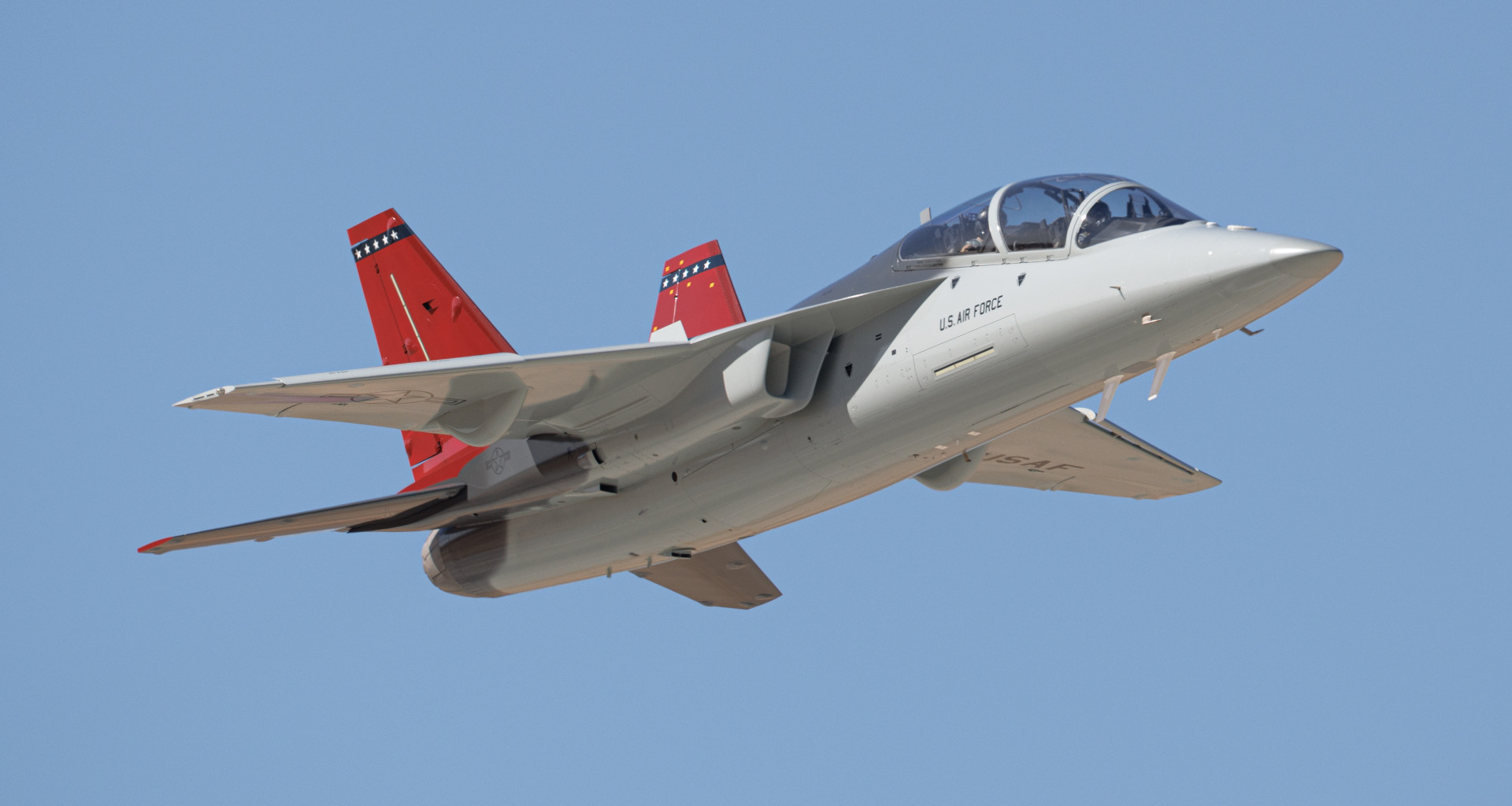
Breaking Defense also reported that the Air Force deliberations regarding the F-7 have so far not directly involved Boeing. The service’s expectation is that such an aircraft could, broadly speaking, offer many of the same kinds of weapons, sensor, and other mission capabilities that are found in existing fourth-generation fighters, such as the F-16C/D. This would come in a smaller and less expensive package with certain limitations, including in terms of range/endurance and total payload capacity.
For its part, Boeing has said it is currently focused on moving the Red Hawk trainer along before entertaining any talk of an armed combat variant or derivative. At the same time, The War Zone, among others, has been highlighting the potential for a light fighter version of the Red Hawk, since that design won the T-X competition. The Air Force has envisioned the possibility of utilizing T-7s as aggressor jets, and potentially more, from the start, itself.
In 2020, there were reports that Serbia might be interested in acquiring T-7s in part as a replacement for its J-22 Orao light combat jets, further underscoring the possibility of a light fighter version of the Red Hawk emerging in the future.
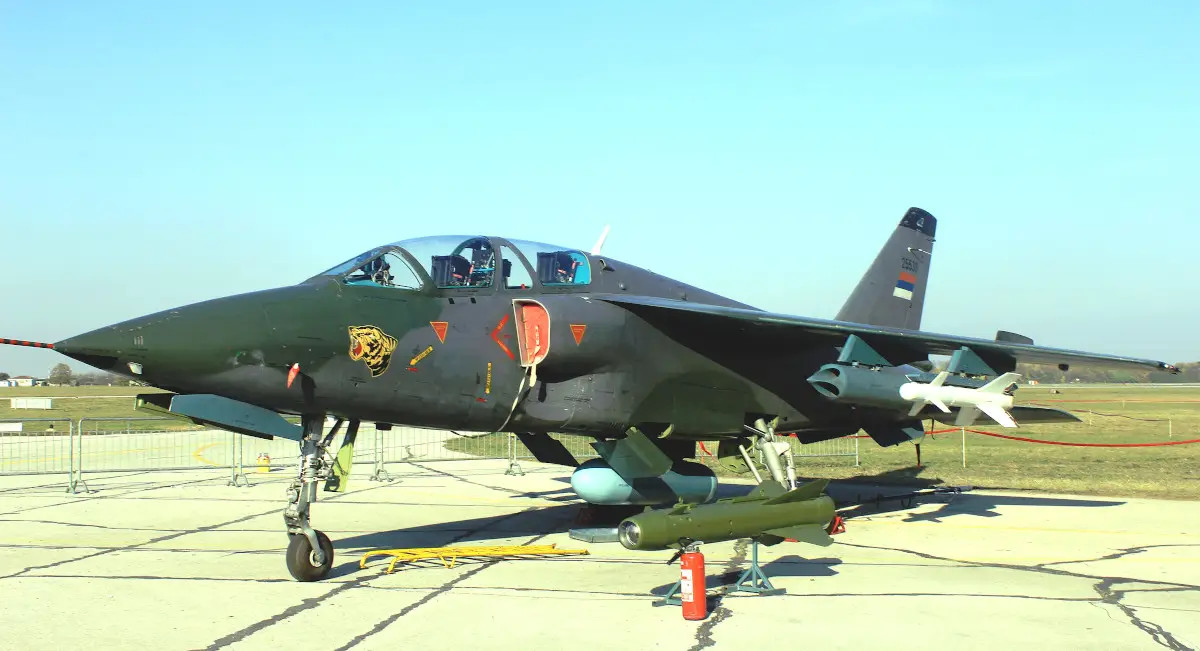
In addition, Boeing and the Air Force have long-touted the T-7’s open-architecture design, as well as the heavy use of digital engineering techniques in its development, as paving the way for more rapid integration of new and improved capabilities and further evolution of the aircraft overall down the line.
More recently, there has been growing skepticism about the full scope of the benefits of digital engineering, especially with regard to the Red Hawk, as you can read more about in this past War Zone feature. Secretary of the Air Force Frank Kendall notably said digital engineering, in general, was “over-hyped” during a talk earlier this year.

It’s also worth noting that there are other in-production light fighter designs on the open market today, including versions of some of the losing entries in the T-X competition. This includes the increasingly popular South Korean FA-50, which just recently started entering service with its newest operator, Poland. South Korea itself, as well as Iraq and the Philippines, also operate FA-50s. Malaysia has examples on order, as well, and the Indonesian Air Force operates an armed variant of the T-50 jet trainer from which the FA-50 was derived.
Korea Aerospace Industries, which makes the FA-50 and T-50, just recently laid out plans for a new single-seat version of the former design.
The export success of the FA-50, in particular, shows that there is a real market for light fighters that Boeing could seek to break into with an F-7 version of the Red Hawk. U.S. manufacturers have long been out of the game when it comes to light combat jets. Foreign interest, or even direct involvement, in an F-7 program could help reduce developmental and unit costs, as well as produce other operational and logistical benefits for the U.S. Air Force.
As it is being described now, the F-7 sounds analogous in certain broad respects to the Cold War-era Northrop F-5-series, and the later F-20 Tiger Shark derivative. These were also pitched as lower-cost, but still very capable alternatives to higher-end fighters of the day. The F-5 family saw immense export success, with examples still in active service in a number of countries today.

When it comes to the Air Force’s future fighter plans, another unnamed official at the International Fighter Conference in Madrid said that improved F-16s, as well as F-7s, could be part of the equation, according to a post on X, formerly Twitter, from Janes‘ Gareth Jennings.
At least 608 of the service’s F-16C/Ds – nearly three-quarters of its current total fleet of 841 Vipers – are expected to receive a major upgrade package that includes a new active electrically-scanned array radar in the coming years. It is unclear whether the remaining jets, many of which are older C/D subvariants, will be upgraded, or if it would even be cost-effective to do so. Many of those aging jets are becoming increasingly more costly to operate and maintain, as well. Buying new, more advanced F-16s to replace them might be an option, but Lockheed Martin’s order books for those jets are also packed.
“What is clear is that we can’t afford to police the Super Bowl with an F-22,” the same individual told Jennings in Madrid.
The offhand comment about policing the Super Bowl with F-22 Raptor stealth fighters gets to what seems to be the bigger issues at play. As it stands now, the Air Force is looking at a future tactical air combat fleet that will consist of F-35As, F-16C/Ds, F-15Es and F-15EXs, and a relatively small number of new crewed sixth-generation stealth combat jets being developed under the Next Generation Air Dominance (NGAD) program.
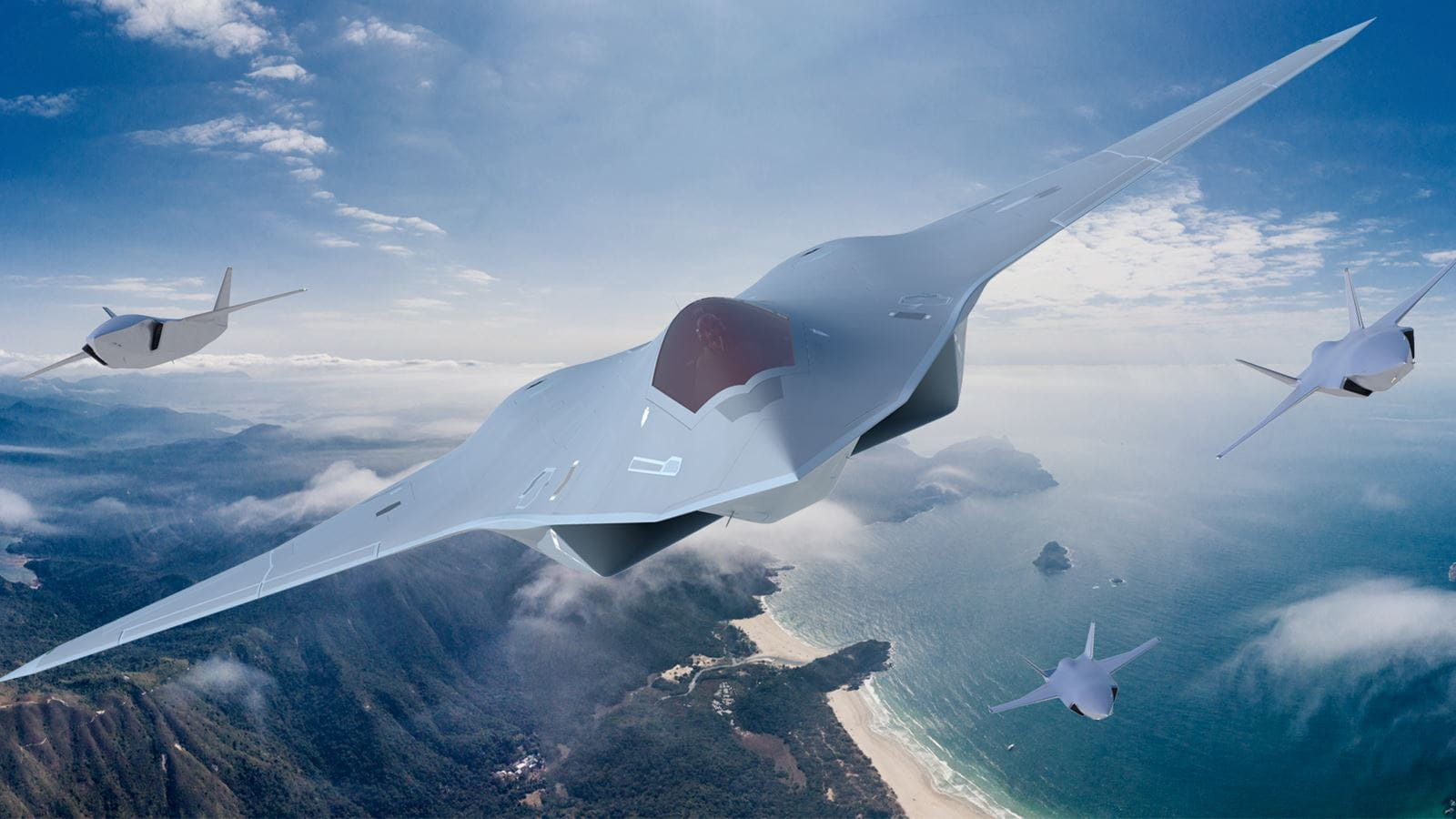
At the same time, it has been ever more apparent in recent years that the Air Force is facing the prospect of key aspects of its long-standing fighter plans becoming unaffordable.
For one, the Air Force is only planning to buy around 200 NGAD combat jets, ostensibly as a direct replacement for its equally small fleet of F-22 Raptor stealth fighters. The service has already made clear that these aircraft will be very expensive, on the order of “multiple hundreds of millions of dollars” apiece, according to Secretary Kendall.
The unit price of the new F-15EX Eagle II has also turned out to be higher than expected due to a number of factors. This can only have been compounded by the Air Force’s decision to significantly truncate its planned purchases of these aircraft, a decision around which many questions still remain as The War Zone has detailed in the past.
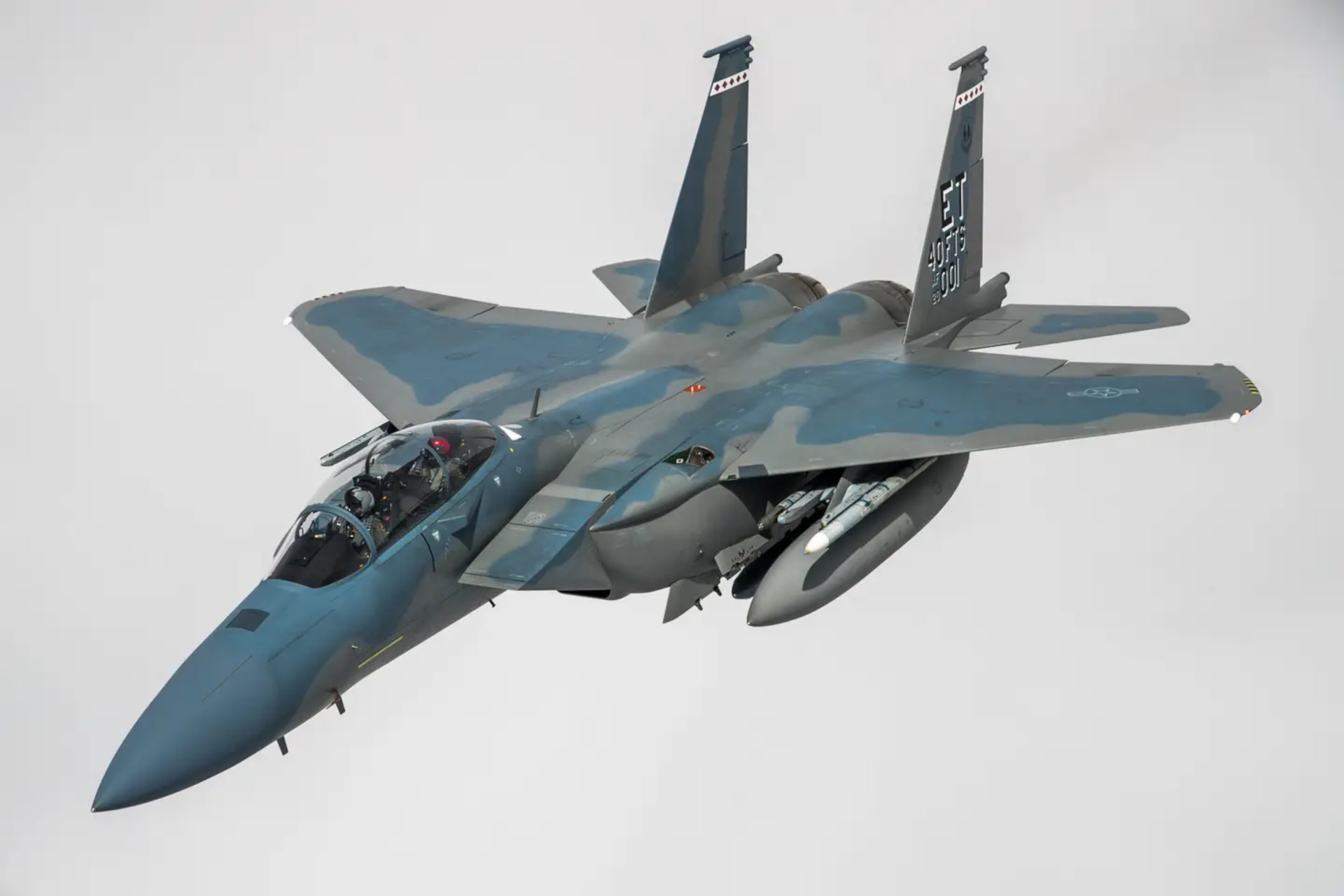
The biggest issue for the Air Force tactical combat jet plans from an affordability perspective centers on the F-35A. Officially, the service’s long-standing goal has been for these jets to eventually supplant the vast majority of its F-16C/D Vipers.
However, the expected costs of the F-35’s critical Block 4 upgrade package continue to grow and what the service will have to pay to sustain these jets has ballooned over the years. Earlier this year, The War Zone did a deep dive into F-35 spare parts shortages, engine issues, and other factors that have contributed to the growth in sustainment costs and also present national security concerns. There are efforts underway to try to mitigate all this, but significant hurdles remain.
The costs to operate and maintain the F-35 have long raised additional questions about whether or not the Air Force might trim back its expected purchases of these jets. That, in turn, has prompted discussions for some time now about cheaper, but also lower-end alternatives, like the notional F-7 or a new clean-sheet lower-cost design. Those aircraft could be tasked with missions that don’t require fifth or sixth-generation stealth fighters, like flying air patrols over the United States. This could help free up the more advanced and costly aircraft for higher-priority missions, or just cut back how much time they spend flying on a day-to-day basis, which could help reduce sustainment costs. In many ways, this is what the F-16 fleet does for the F-35 and the F-22 today.
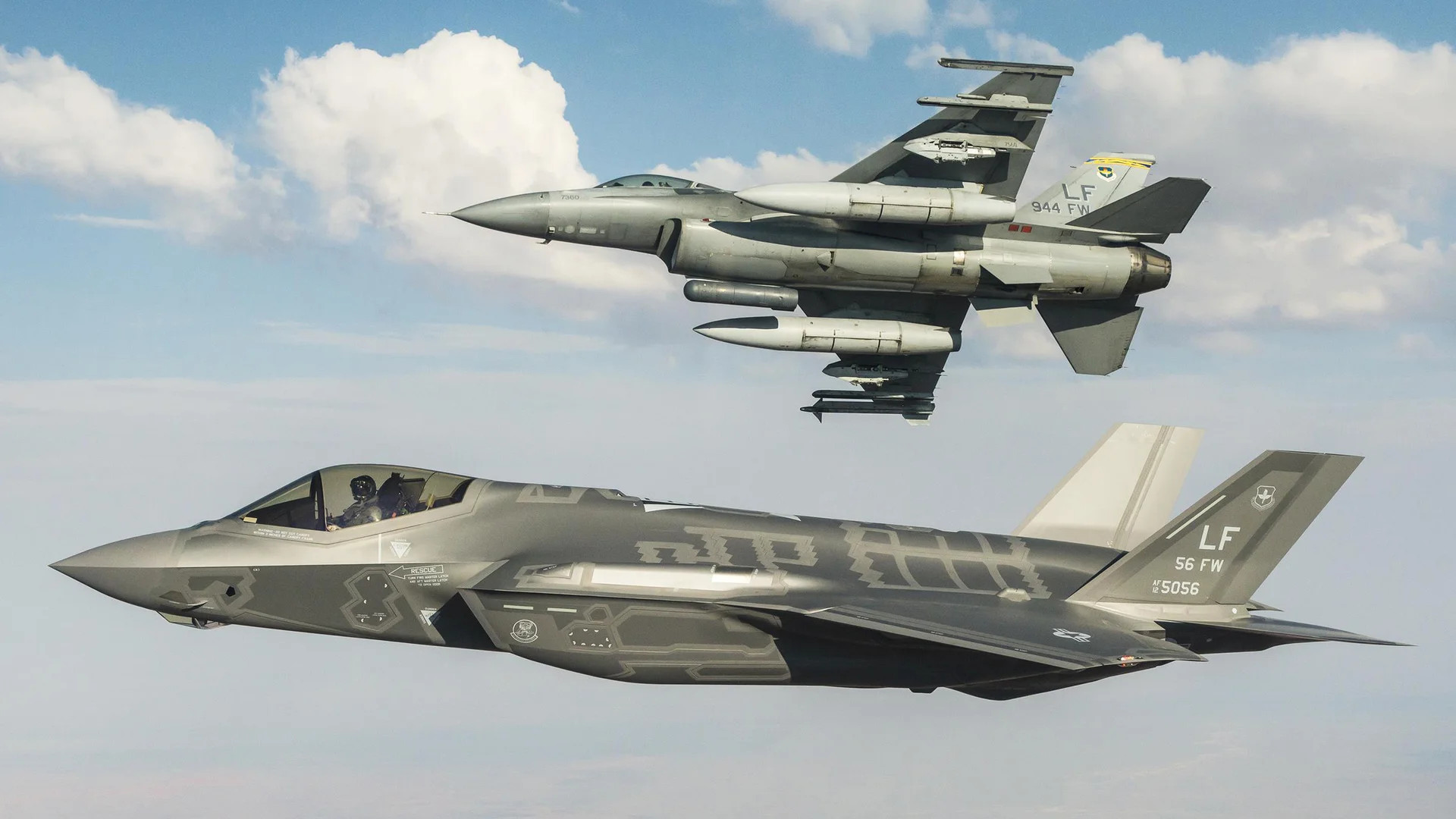
Interestingly, what is often absent from these discussions, as seems to have been the case at the crewed fighter-focused conference in Madrid this week, is drones. Senior Air Force officials now talk regularly about how uncrewed platforms, especially whatever will come out of the Collaborative Combat Aircraft (CCA) program, will be a key component of achieving “affordable mass” down the line.
CCA, which is another part of the larger NGAD initiative, is centered on the development and acquisition of a fleet of advanced drones with high degrees of autonomy. The Air Force’s plan, at least initially, is for these uncrewed aircraft to work closely together with crewed combat jets while serving as weapons trucks, sensor nodes, and electronic warfare platforms. They could of course take on other missions and operate more independently as time goes on.
The service has said that it is looking to acquire at least 1,000 CCAs, if not many more. The 1,000-drone figure was based on the idea of pairing two of the uncrewed aircraft with each of the 200 crewed NGAD combat jets and 300 F-35s.

Though the CCA requirements are still very much being refined, what has been disclosed so far has pointed to loyal wingman-type designs with lower performance and less capability than a traditional fighter. These designs would then also be much cheaper that a conventional combat jet.
There remains a potential for Air Force interest in more capable fighter-esque uncrewed combat air vehicles (UCAV). Just last week, Kratos unveiled the first rendering of a stealthy drone called Thanatos. This design looks to be being pitched to the Air Force and looks, at least externally, like it might be relatively advanced and exquisite (costly) compared to what might be expected from a CCA entrant.
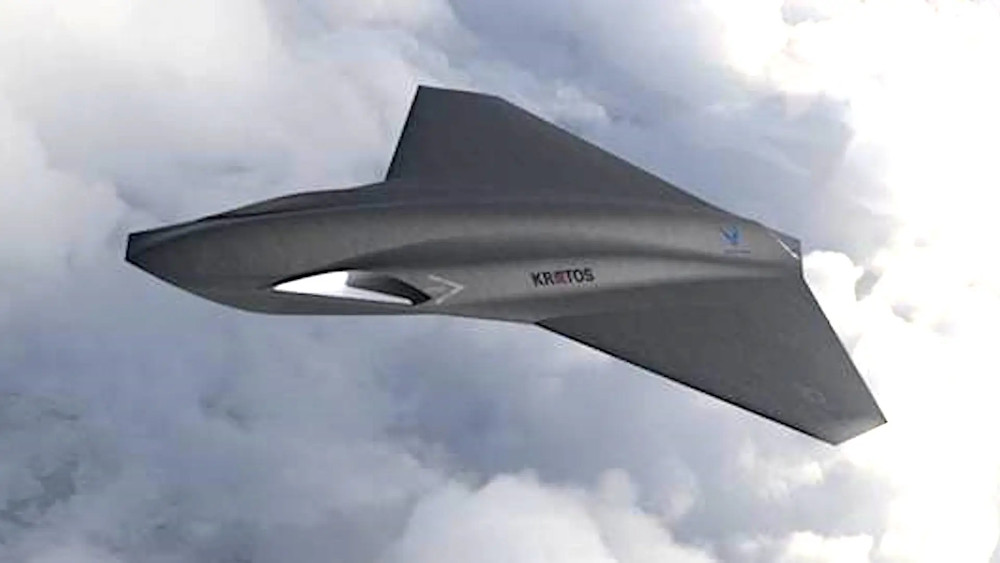
As with the F-7, the Air Force could leverage foreign interest in CCAs or other advanced uncrewed capabilities, especially from very close allies like the United Kingdom and Australia. This could help spread cost burdens through economies of scale and produce other beneficial synergies.
Earlier this year, The War Zone explored in detail how the trilateral Australia-United Kingdom-United States (AUKUS) defense cooperation framework could provide an ideal vehicle for a development program like this, especially when it comes to the creation of something to supplement fourth-generation fighters. This all seems very much in line with what the Air Force is dealing with now as it looks to a post-F-16 future.
It’s interesting to note that the clip in the social media post below from a previous Air Force presentation about its future fighter force plans specifically highlights the importance of the CCA effort and AUKUS.
There are, of course, some mission sets where a crewed combat jet might still be preferable to an uncrewed platform. Altogether, it still very much remains to be seen what mixture of future tactical air combat capabilities, which could include the notional F-7 and drones, among other things, the Air Force will ultimately pursue.
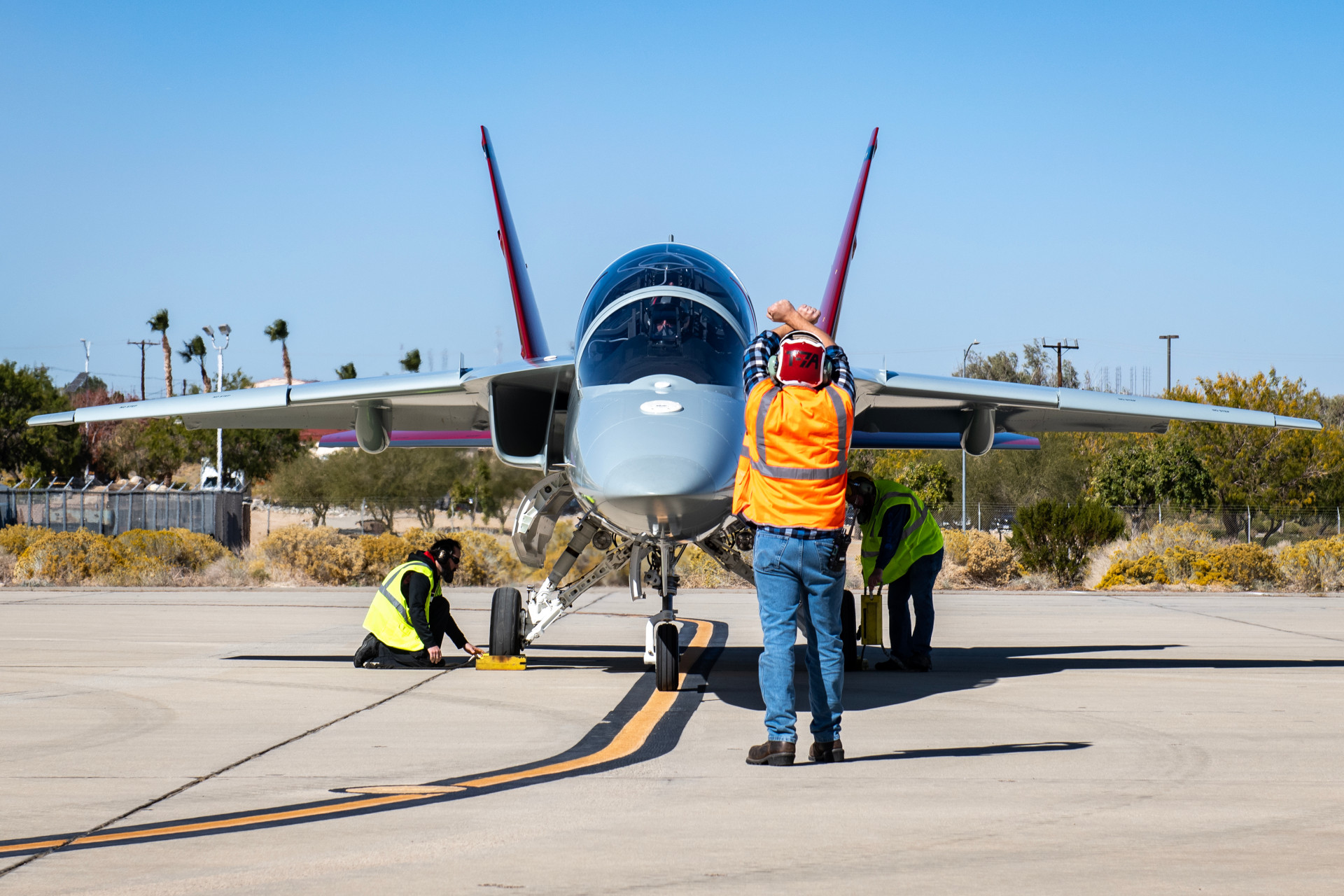
When it comes to a future F-7 concept, it looks like it will have to wait for the T-7 program to advance further along. That process has now taken an important step forward with the arrival today of the first pre-production EMD Red Hawk at Edwards.
Contact the author: joe@thedrive.com
